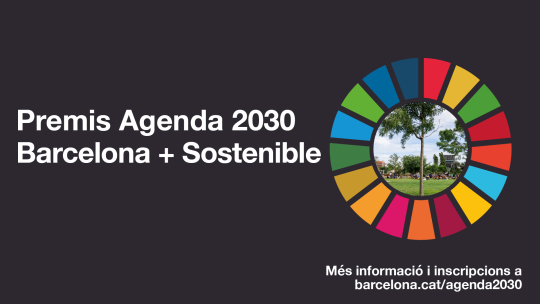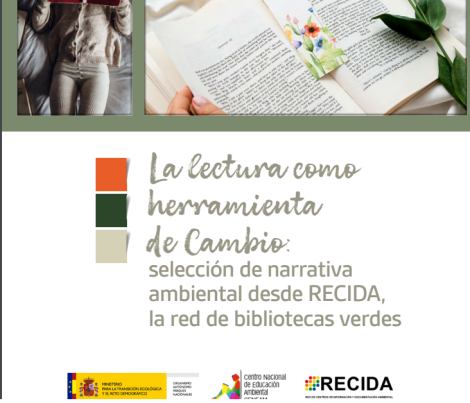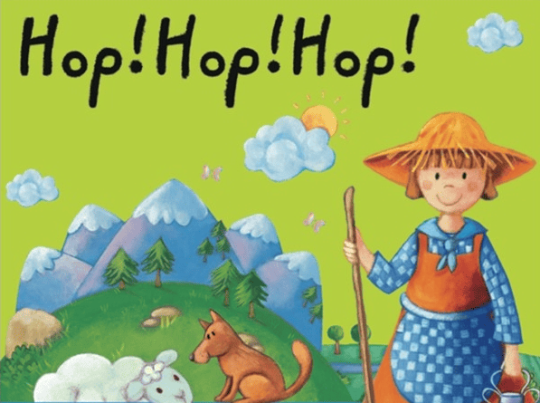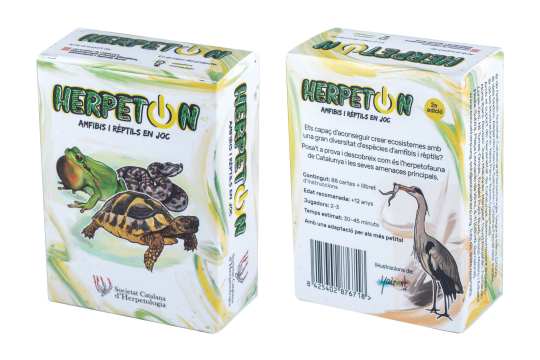

Elaborate: CONAMA and the Network of Environmental Information and Documentation Centers (RECIDA)
November, 2024
Language: Spanish

Hop! Hop! Hop! is a cooperative game where children must work together to achieve their goal: get the flock of sheep to the shelter before the wind blows the bridge away.
The game is designed for 2 to 6 players, starting from 4 years old.
Game instruction: Hop! Hop! Hop! (in spanish) (PDF 347.15 KB)

10 turns to collapse is a game designed to explore renewable and non-renewable energy sources. Its objective is to work with various concepts related to energy resources. It functions as an allegory of reality, where each element can symbolize an aspect of energy resource management.
The game's dynamics involve managing the energy model of a city with all available resources. In each turn, players must meet the basic needs of the population with the energy they generate from the available resources.
Up to 5 groups of players, aged 12 and above, can play.
Dimensions: drum with a diameter of 40 cm and a height of 29 cm.

Solar car designed for children to learn how to use renewable energy as a power source by assembling the different parts of the device.
Includes: assembly instructions.
Recommended for ages 8 and up, with adult supervision.

- Composition: two boxes and one blueprint tube
- Dimensions: boxes of 35 x 24 x 15 cm and one expandable blueprint tube measuring 1.05 m x 12 cm in diameter.
- Main contents: Educator's guide to facilitate the game, one descriptive activity sheet, game materials (one map consisting of two 2 x 2.5 m tarps, 12 tokens, 187 assembly pieces, colored chalk).
- Description: A game designed to encourage reflection on public spaces and the potential to transform them into more livable and sustainable environments.
- Target audience: primary and secondary education, family audiences.
- Related documents (in catalan):

Earth is an open-world game focused on creating production engines. This board game aims to capture a small hint of the vastness offered by the diversity of nature.
The best players will be those who adapt the quickest, just as animals and plants must do to thrive. The ultimate goal of the game is to achieve the maximum number of victory points. To do this, players will need to plant cards to create their own island.
The game is designed for 1 to 5 players, ages 14 and up.

In Cascadia, players compete to create the most diverse environment in the Pacific Northwest by selecting habitat tiles and wildlife tokens to build a beautiful landscape mosaic.
Players will compete to create the largest surface areas of habitats, but as they build their environments, they must pay attention to the habitats they create and their wildlife, as the ultimate goal is to end up with the most balanced and harmonious ecosystems.
The game is designed for 1 to 4 players, ages 10 and up.

Are you capable of creating ecosystems with a great diversity of amphibian and reptile species? Test yourself and discover what the herpetofauna of Catalonia is like and its main threats.
The objective of Herpeton is to form aquatic and terrestrial ecosystems with the highest diversity of amphibian and reptile species while seeking to reduce impacts from natural and human sources.
The game is designed for 2-3 players, ages 12 and up.

